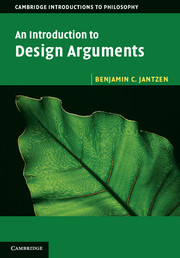Book contents
- Frontmatter
- Dedication
- Contents
- List of figures and tables
- Preface
- 1 Introduction
- 2 Preliminaries
- 3 Arguments from antiquity
- 4 Medieval arguments
- 5 The golden age of natural theology
- 6 Unusual design arguments
- 7 Hume
- 8 Paley
- 9 Darwin
- 10 Loose ends
- 11 The modern likelihood argument
- 12 Intelligent design I: irreducible complexity
- 13 Intelligent design II: specified complexity
- 14 What is complexity?
- 15 Supernatural agents and the role of laws
- 16 A brief survey of physical law
- 17 Fine tuning I: positive arguments
- 18 Fine tuning II: objections
- 19 Conclusion
- Bibliography
- Index
17 - Fine tuning I: positive arguments
Published online by Cambridge University Press: 05 June 2014
- Frontmatter
- Dedication
- Contents
- List of figures and tables
- Preface
- 1 Introduction
- 2 Preliminaries
- 3 Arguments from antiquity
- 4 Medieval arguments
- 5 The golden age of natural theology
- 6 Unusual design arguments
- 7 Hume
- 8 Paley
- 9 Darwin
- 10 Loose ends
- 11 The modern likelihood argument
- 12 Intelligent design I: irreducible complexity
- 13 Intelligent design II: specified complexity
- 14 What is complexity?
- 15 Supernatural agents and the role of laws
- 16 A brief survey of physical law
- 17 Fine tuning I: positive arguments
- 18 Fine tuning II: objections
- 19 Conclusion
- Bibliography
- Index
Summary
A cosmic conspiracy?
In 1979, a curious paper appeared in the pages of the eminent scientific journal Nature. The paper was unusual because it did not report on novel experimental findings. It did not offer a new theory or explanation of known phenomena. It did not even survey the current status of a developing branch of science as other ‘review articles’ in the journal typically do. Instead, it argued for a long list of coincidences of two kinds. First, there are the connections between different branches of physical science. As the paper’s authors, B. J. Carr and M. J. Rees explain, “[t]he structure of the physical world is manifested on many different scales, ranging from the Universe on the largest scale, down through galaxies, stars and planets, to living creatures, cells and atoms … Each level of structure requires for its description and explanation a different branch of physical theory, so it is not always appreciated how intimately they are related.” They set out in part to exhibit this intimate connection by demonstrating how most of these disparate ‘natural scales’ described by different theories are all determined by a shared handful of dimensionless parameters. In fact, most of their examples involve just three parameters: the electromagnetic fine-structure constant (α), the gravitational fine-structure constant (αG), and the electron-to-proton mass ratio (me/mp). So, for instance, the authors provide a simple physical argument for the fact that most stars have a mass in a range between 0.1 and 10 times that of our Sun. This range of possibility is itself dictated by the parameter αG. Of course, that parameter might have had a different value, at least as a logical possibility. In that case, the range of masses computed would be different. So whatever value αG has, physical processes of the sort operating in our universe guarantee that stars form only in a particular range, but what that range is could be different. Similarly, the authors argue that the size of a typical atom is dictated by the value of α – the bigger α is, the smaller a typical atom is.
- Type
- Chapter
- Information
- An Introduction to Design Arguments , pp. 272 - 290Publisher: Cambridge University PressPrint publication year: 2014



